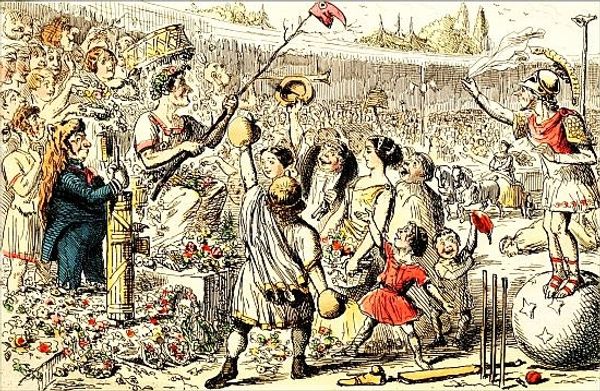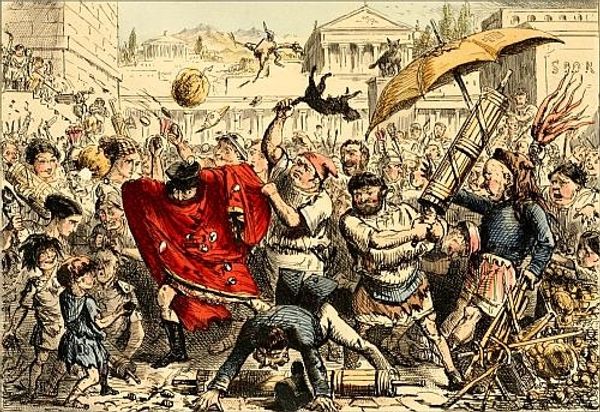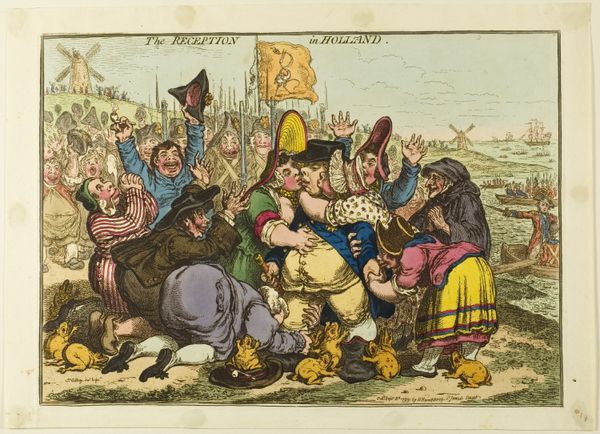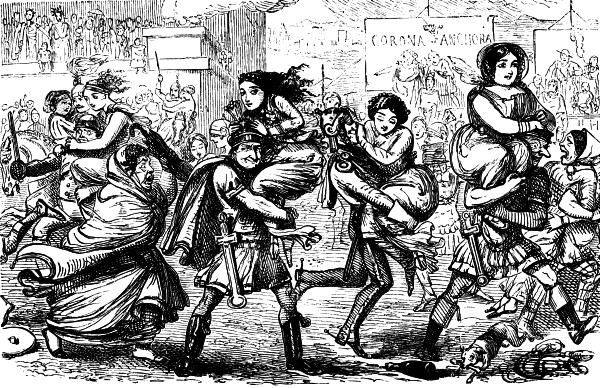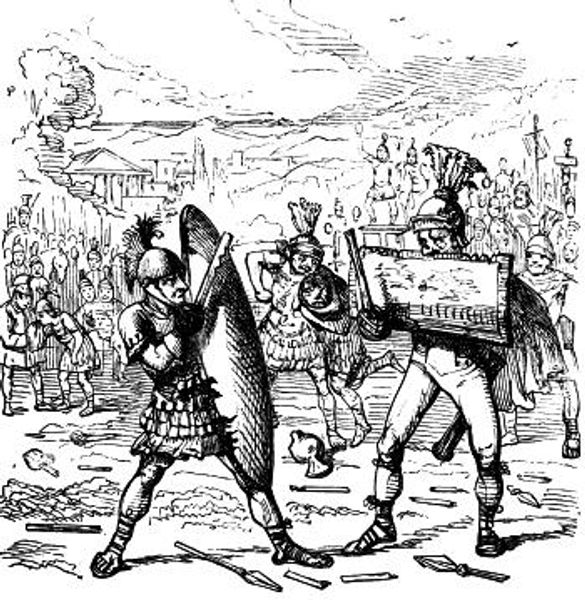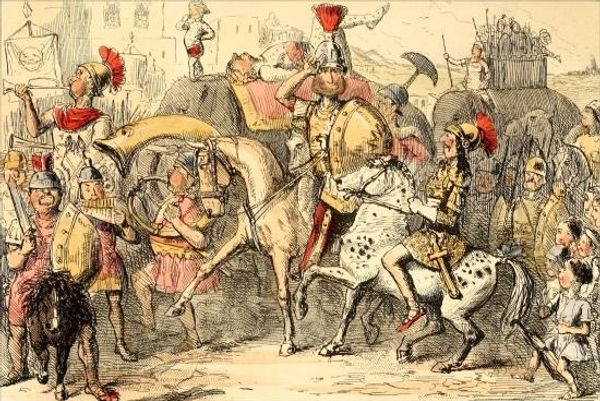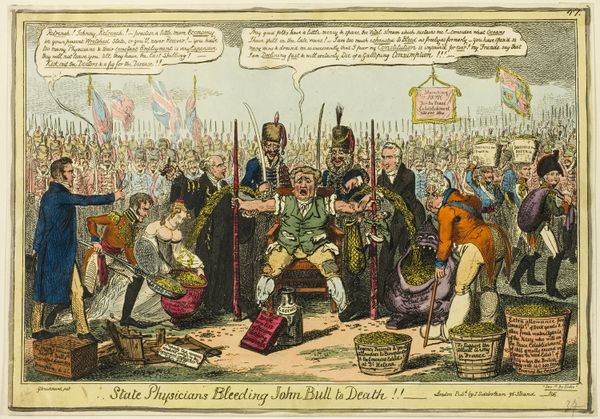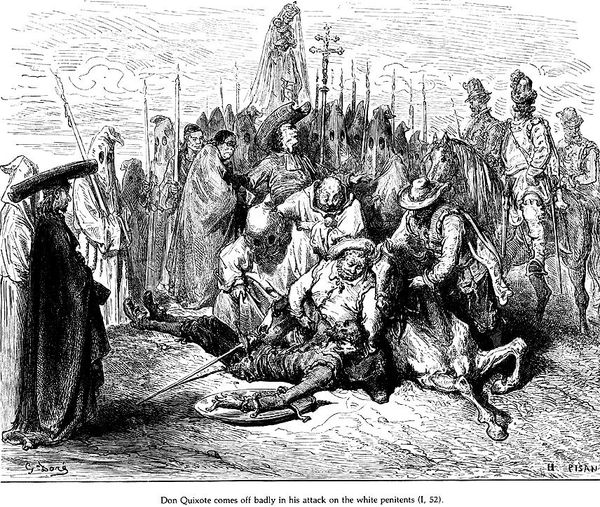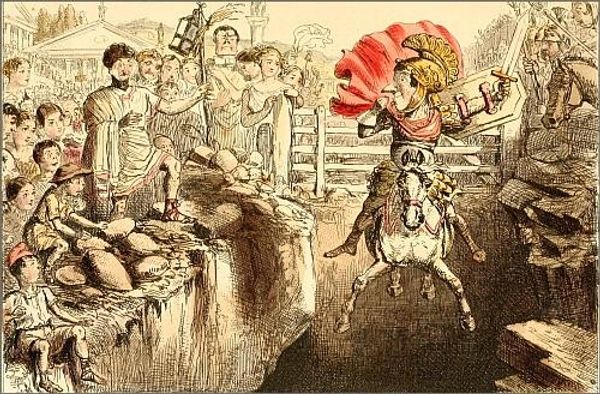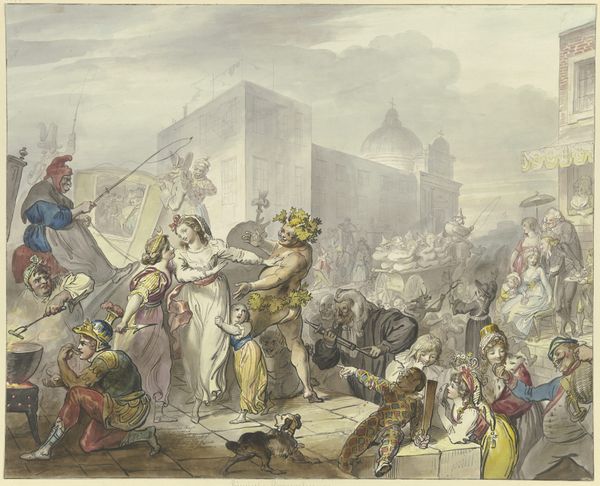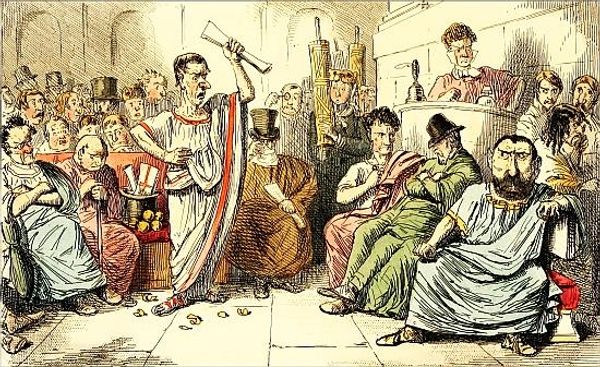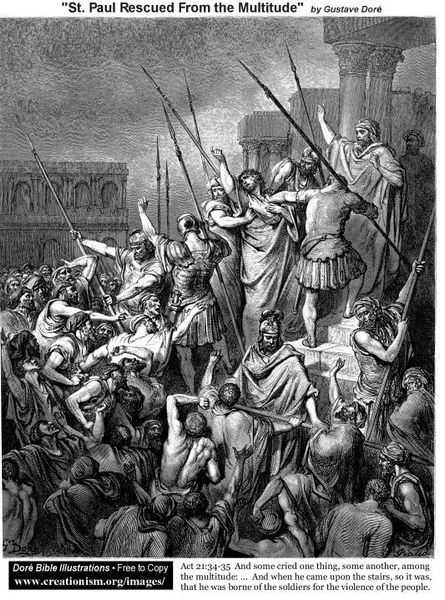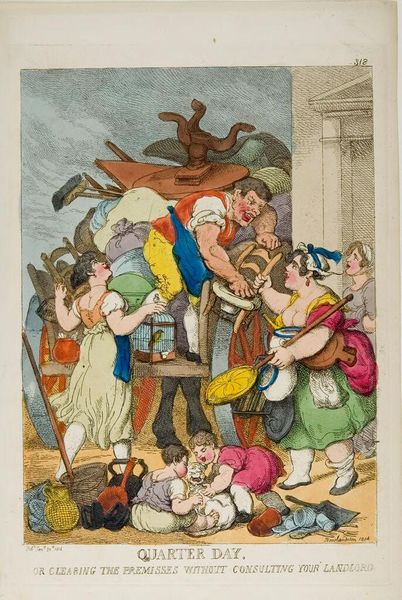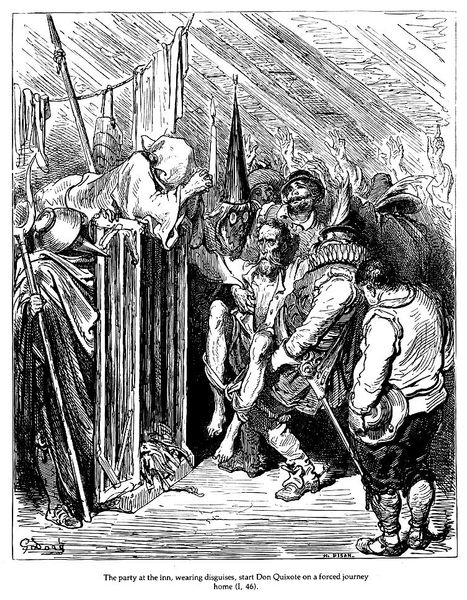
drawing, ink, pen
#
drawing
#
neoclacissism
#
caricature
#
ink
#
pen
#
genre-painting
#
history-painting
Copyright: Public domain
Curator: This pen and ink drawing, titled "Tarquinius Superbus Makes Himself King," presents a darkly humorous interpretation of a historical event. Its style suggests a Neoclassical leaning, though with an unmistakably caricatured sensibility. What are your immediate impressions? Editor: Utter chaos! But ordered chaos. My eye darts across a fractured stage filled with bodies contorted in various states of duress and celebration, all culminating in that grotesquely regal figure enthroned at the composition's upper tier. It seems more political cartoon than historical painting. Curator: Indeed, the artist uses caricature to create emphasis. Note the size of Tarquinius Superbus relative to the other figures—he is physically larger, exaggeratedly so, emphasizing his tyrannical power. Observe too the dynamic, almost frantic linework. It eschews classical idealism for something much more vigorous, less restrained. The figures aren't idealized at all; their faces are contorted into grotesque masks. Editor: Precisely. It plays with, and perhaps even satirizes, the tropes we associate with representations of Roman power. I see not glory, but instead commentary on tyrannical authority. Glasses lying on the floor by the fallen figure signal the presence of enlightenment or the Age of Reason, and how tyranny destroys intellectual pursuit. The whole setting screams usurpation of leadership and societal fracture. Curator: Semiotically, the use of traditional Roman iconography becomes decidedly unstable. The toga, normally a signifier of civic virtue and senatorial authority, here adorns figures engaged in what looks like either aggressive conflict or abject terror. Editor: It all underscores how power is always enacted through visible symbols: a crown, robes, weapons. Their meanings can, however, be manipulated or emptied. Note how the 'king' holds up the rod to dominate other actors in the space who vie for control. But that one single actor with clear eyewear makes the viewer contemplate ideas that can usurp established icons and power itself. Curator: Quite so. The drawing achieves a certain resonance through its manipulation of form and the recontextualization of iconographic signs. It provides us access not just to one historical event, but it opens avenues for thinking about how it's reinterpreted through satire. Editor: An image speaking to our anxieties regarding our world in subtle yet significant strokes! Thank you.
Comments
No comments
Be the first to comment and join the conversation on the ultimate creative platform.
